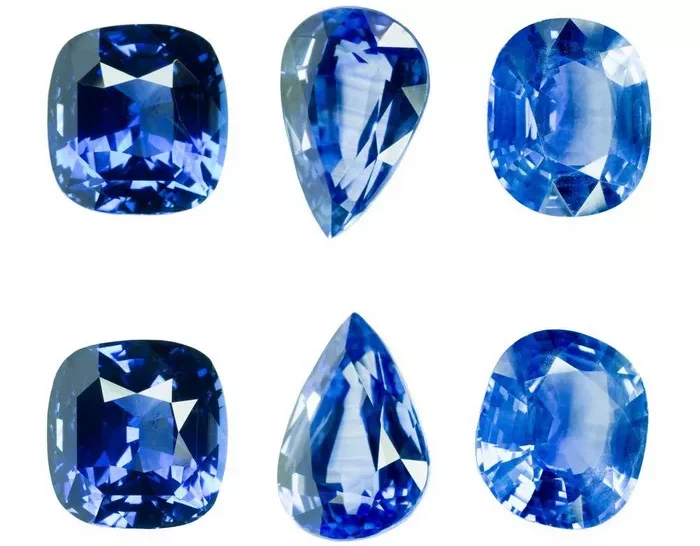Aquamarine is a stunning gemstone known for its beautiful blue color and association with the sea. As one of the most popular gemstones in the world, aquamarine has captured the hearts of jewelry enthusiasts and collectors alike. However, determining the value of a real aquamarine stone can be complex, as it depends on a variety of factors including size, color, clarity, and overall quality. In this article, we will explore how much a real aquamarine stone is worth by examining these key factors and providing guidance on how to evaluate the value of an aquamarine gemstone.
Understanding Aquamarine
Aquamarine is a variety of the mineral beryl, which also includes other gemstones such as emerald and morganite. Aquamarine is prized for its delicate blue to blue-green color, which is caused by trace amounts of iron within the crystal structure. The name “aquamarine” is derived from the Latin words for “water” and “sea,” reflecting the gemstone’s resemblance to the colors of the ocean.
Aquamarine is found in various locations around the world, including Brazil, Nigeria, Madagascar, and Pakistan. The most valuable aquamarine stones typically exhibit a deep, intense blue color with excellent clarity and transparency.
Factors Affecting the Value of Aquamarine
Several factors can affect the value of a real aquamarine stone. Understanding these factors can help you determine the worth of an aquamarine gemstone:
Color: The color of an aquamarine is one of the most important factors in determining its value. The most valuable aquamarine stones exhibit a deep, intense blue color with a slight hint of green. Stones that are too pale or have a washed-out appearance are considered less valuable. The presence of zoning or uneven distribution of color can also affect the value of an aquamarine.
Clarity: Clarity refers to the presence of inclusions or internal flaws within an aquamarine stone. While some inclusions are expected in natural gemstones, aquamarine stones with minimal to no visible inclusions are considered more valuable. Stones that are heavily included may appear cloudy or less transparent, reducing their value.
Cut: The cut of an aquamarine can also affect its value. Well-cut aquamarine stones exhibit optimal brilliance and sparkle, enhancing their overall beauty. The most popular cuts for aquamarine stones include emerald-cut, oval, and round. The quality of the cut, including the symmetry, proportions, and polish, can impact the value of an aquamarine gemstone.
Carat Weight: Like other gemstones, the size of an aquamarine stone is measured in carats, with larger stones typically being more valuable than smaller ones. However, other factors such as color, clarity, and cut also play a significant role in determining the value of an aquamarine stone. It’s important to consider all of these factors when evaluating the worth of an aquamarine gemstone.
Treatment: Aquamarine stones are sometimes treated to enhance their color and clarity. Common treatments include heat treatment to remove yellowish tones and improve the blue color, as well as irradiation to enhance the color intensity. While treated aquamarine stones can be beautiful and valuable, they are generally less valuable than untreated stones of similar quality.
How Much is a Real Aquamarine Stone Worth
When evaluating the value of an aquamarine stone, it’s important to consider all of the factors mentioned above. Here are some general guidelines for determining the value of an aquamarine gemstone:
Color: The most valuable aquamarine stones exhibit a deep, intense blue color with a slight hint of green. Stones with a pale or washed-out appearance are considered less valuable. The presence of zoning or uneven distribution of color can also affect the value of an aquamarine.
Clarity: Aquamarine stones with minimal to no visible inclusions are considered more valuable. Stones that are heavily included may appear cloudy or less transparent, reducing their value.
Cut: Well-cut aquamarine stones exhibit optimal brilliance and sparkle, enhancing their overall beauty. The quality of the cut, including the symmetry, proportions, and polish, can impact the value of an aquamarine gemstone.
Carat Weight: Larger aquamarine stones are generally more valuable than smaller ones, all else being equal. However, other factors such as color, clarity, and cut also play a significant role in determining the value of an aquamarine stone.
Treatment: Treated aquamarine stones are generally less valuable than untreated stones of similar quality. It’s important to consider whether the aquamarine stone has been treated and how this may affect its value.
Conclusion
Aquamarine is a stunning gemstone known for its beautiful blue color and association with the sea. The value of a real aquamarine stone depends on a variety of factors including size, color, clarity, and overall quality. By understanding these factors and how they affect the value of an aquamarine gemstone, you can make an informed decision when purchasing or selling aquamarine jewelry. Whether you’re a gemstone enthusiast, collector, or jeweler, knowing how to evaluate the worth of an aquamarine stone ensures that you can appreciate its beauty and value for years to come.


